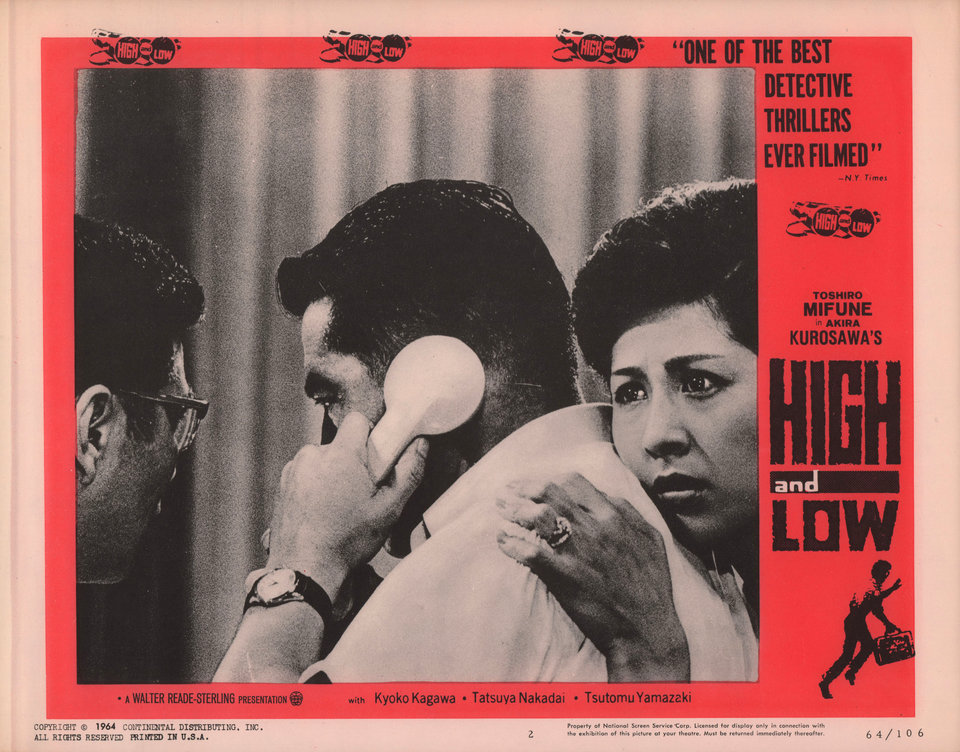By CONNOR KEATING
Tiger Media Network
After forcing myself to watch the “Monster Hunter” movie and “The Land Unknown,” I really needed a palate cleanser. A nice, legitimately good movie. How about another Kurosawa film? However, this time it isn’t a samurai film, but instead a crime drama. That film is, of course, Kurosawa’s 1963 masterpiece “High and Low,” which is apparently getting a remake… we’ll see how that turns out…
Anyways, “High and Low” follows a shoe designer who works for a large company and is currently in the middle of a feud with some of the other heads of the company. So, to gain control, he puts a mortgage on everything he owns in order to buy almost half of the company. However, things go south when a kidnapper takes his son and holds him for a ransom of $30 million. At first, he’s willing to pay, but when it’s discovered that the kidnapper accidentally snagged the chauffeur’s son instead, he becomes far more stingy with his money. Does he pay the ransom and lose everything, or sacrifice a boy for his own livelihood? It soon becomes a race for the police to track down and catch the criminal.
This film isn’t what I normally watch, but after seeing Kurosawa’s samurai films, I decided to give this one a blind shot when I found it at Barnes & Noble, so the fact that I enjoy this film so much should say a lot about its quality. The film can pretty much be split into two halves. The first half features a lot of intense debates over whether our protagonist, Kingo Gondo, should pay the ransom, while the police have to secretly listen in on the telephone conversations without the kidnapper finding out. The second half is where the police have to thoroughly analyze every piece of evidence in order to figure out who the kidnapper is and arrest him. While the film may sound dull, it manages to be very engaging and intense the whole way through. The ideological debates from the first half are very interesting, and it really helps that all the characters are very well written and acted.

While it may sound like our protagonist, Kingo Gondo, is some mean, greedy businessman, he does have a bit of a softer and more likable side. For starters, the reason he’s trying to buy out so much of the company is because he’s been with it for so long, values the company, and the newer heads want to diminish the quality of the shoes in order to increase profit, and because Gondo is a shoemaker first and foremost, he isn’t happy about that. He also clearly cares about his family and the chauffeur. He wants him to get his son back, but that would put his own family on the streets and he’d be completely booted out of the company.
Gondo’s wife, Reiko, is very caring and wants Gondo to pay the ransom for the chauffeur’s sake, though he’s worried about how she would fare being broke since she was born into a wealthy family, while Gondo had to climb his way up. The chauffeur himself is a bit of a pathetic man, desperate to get his son back, but then the next day, he’s telling Gondo not to worry about it. His character probably wouldn’t work well if it weren’t for the stellar acting, creating a man you really feel sorry for.
There are also various employees of Gondo’s company, National Shoes, that act as additional antagonistic forces, causing Gondo to think twice before paying the ransom. This leads to some additional drama and betrayals.
Then there are the police officers, they’re all pretty cool, and the focus gets shifted towards them during the second half while they’re hunting for the criminal. There are quite a few of them, but I’d say the two main standouts are Chief Detective Tokura, who acts as the knowledgeable and cool leader of the investigation, and Chief Detective “Bos’n” Taguchi, who sort of acts as a very slight bit of comic relief. The chemistry between all of the investigators really strengthens the second half, making it so that there’s never a dull moment.
Of course, though, there’s also the kidnapper himself, who we don’t see too often, with only a few brief clips around the middle of him scanning over newspaper articles about the investigation, but once the film reaches the third act, he becomes far more prominent. The film ultimately concludes with a very well-done interaction between him and Gondo, where the two are finally able to meet and confront each other. The performance of the kidnapper in this scene is one of the best I have ever seen.

“High and Low” is a fantastic film with a great cast of characters, an interesting and nail-biting plot filled with philosophical debates over class and what’s right and wrong, intense investigations, and elaborate schemes. All of it comes together with Kurosawa’s excellent direction and some powerful performances to deliver one of the greatest films of the 1960s. I give this film nine “Senkichi Omura sightings” out of ten.
Connor Keating is a junior at Fort Hays State University, studying digital media and journalism. Connor is an old-school movie fan, particularly Japanese monster movies, and is an avid DVD collector.


You must be logged in to post a comment.